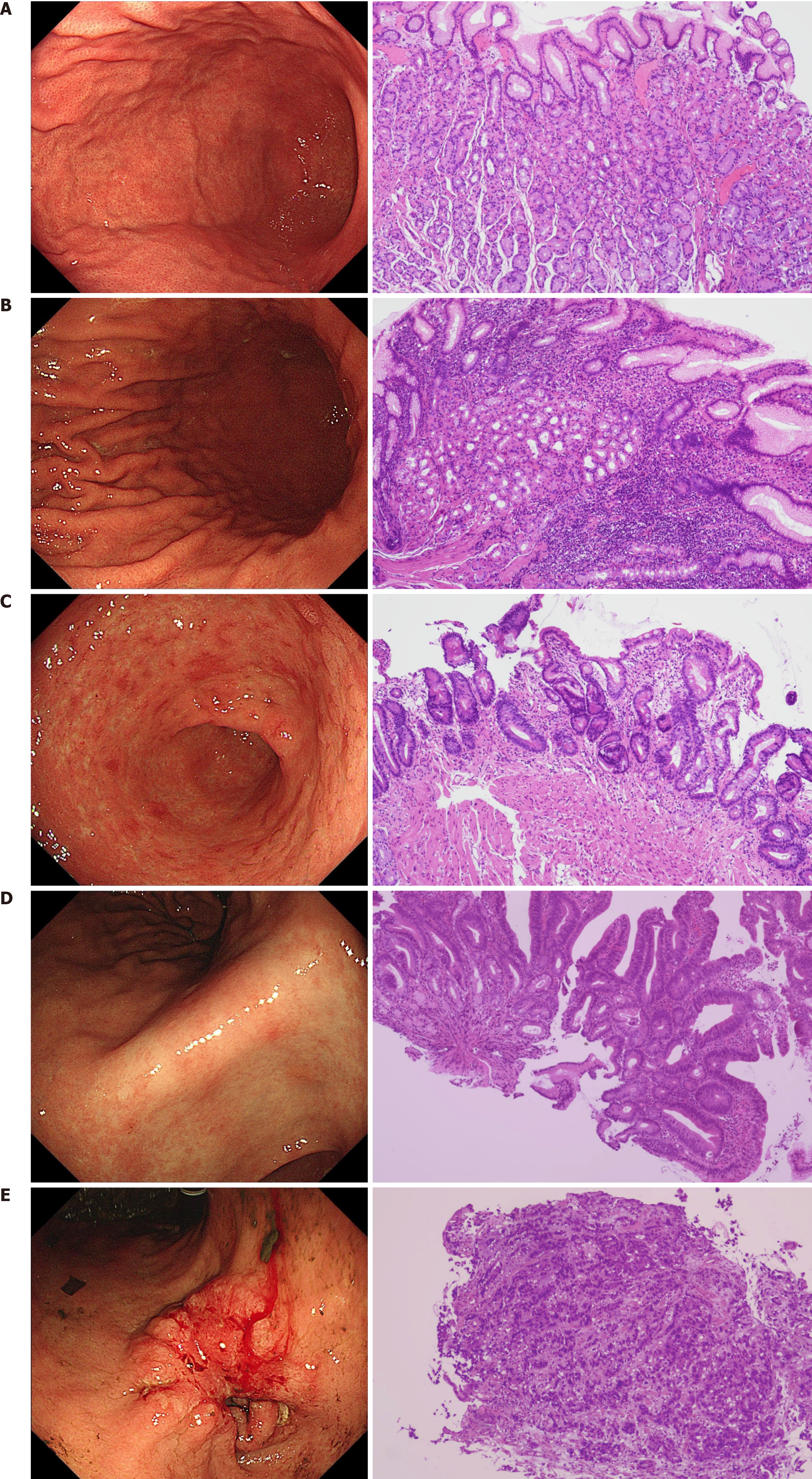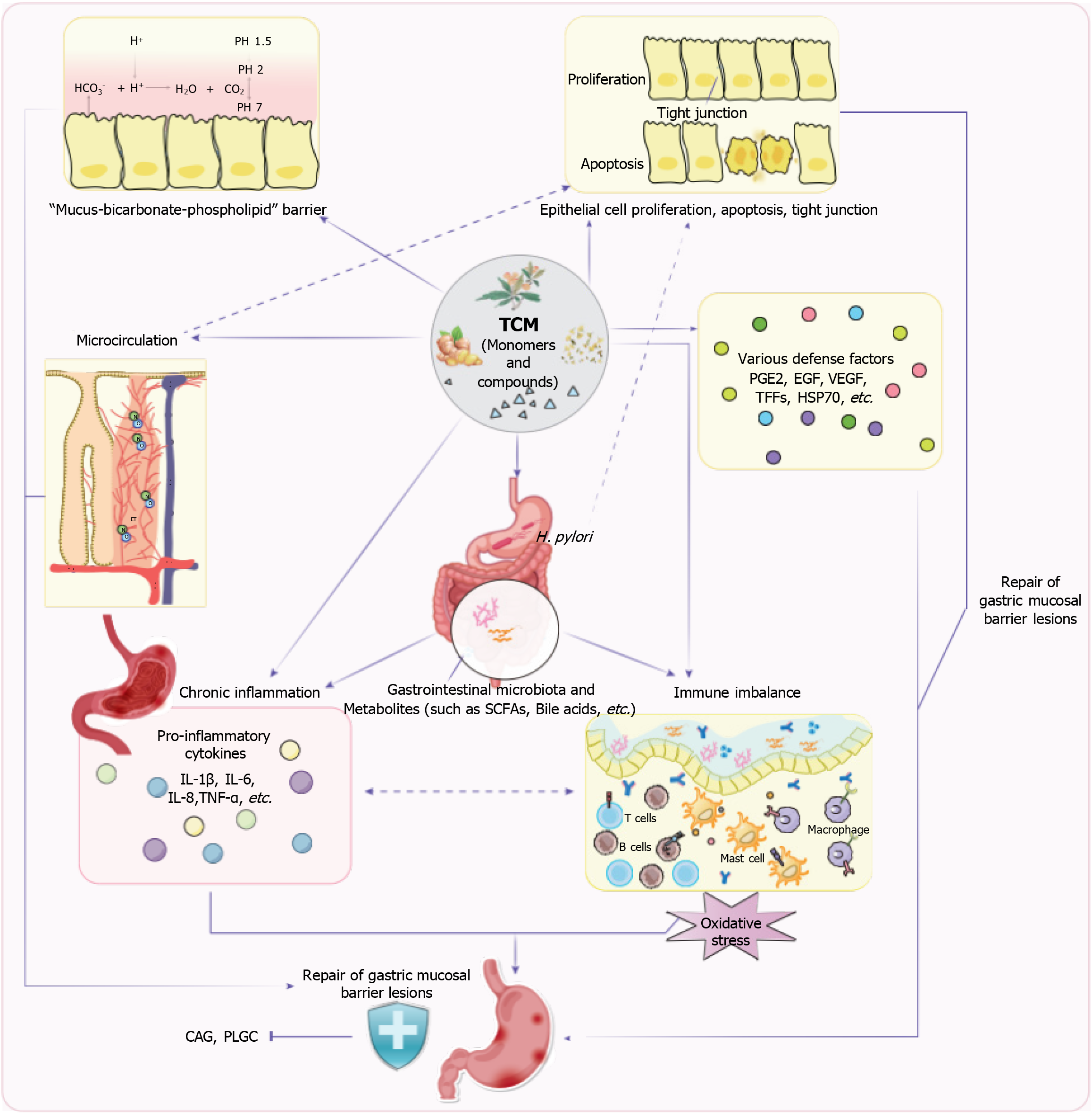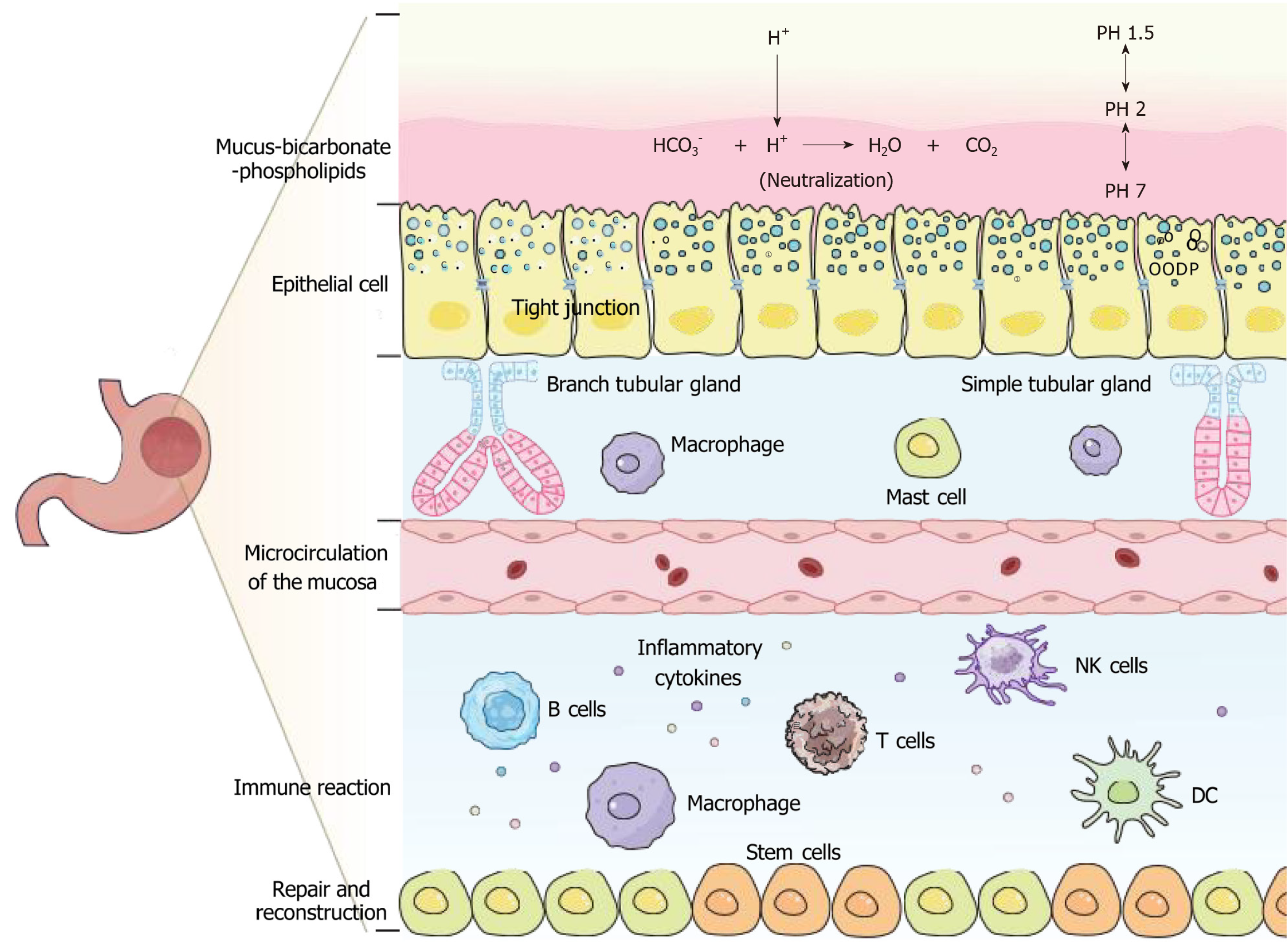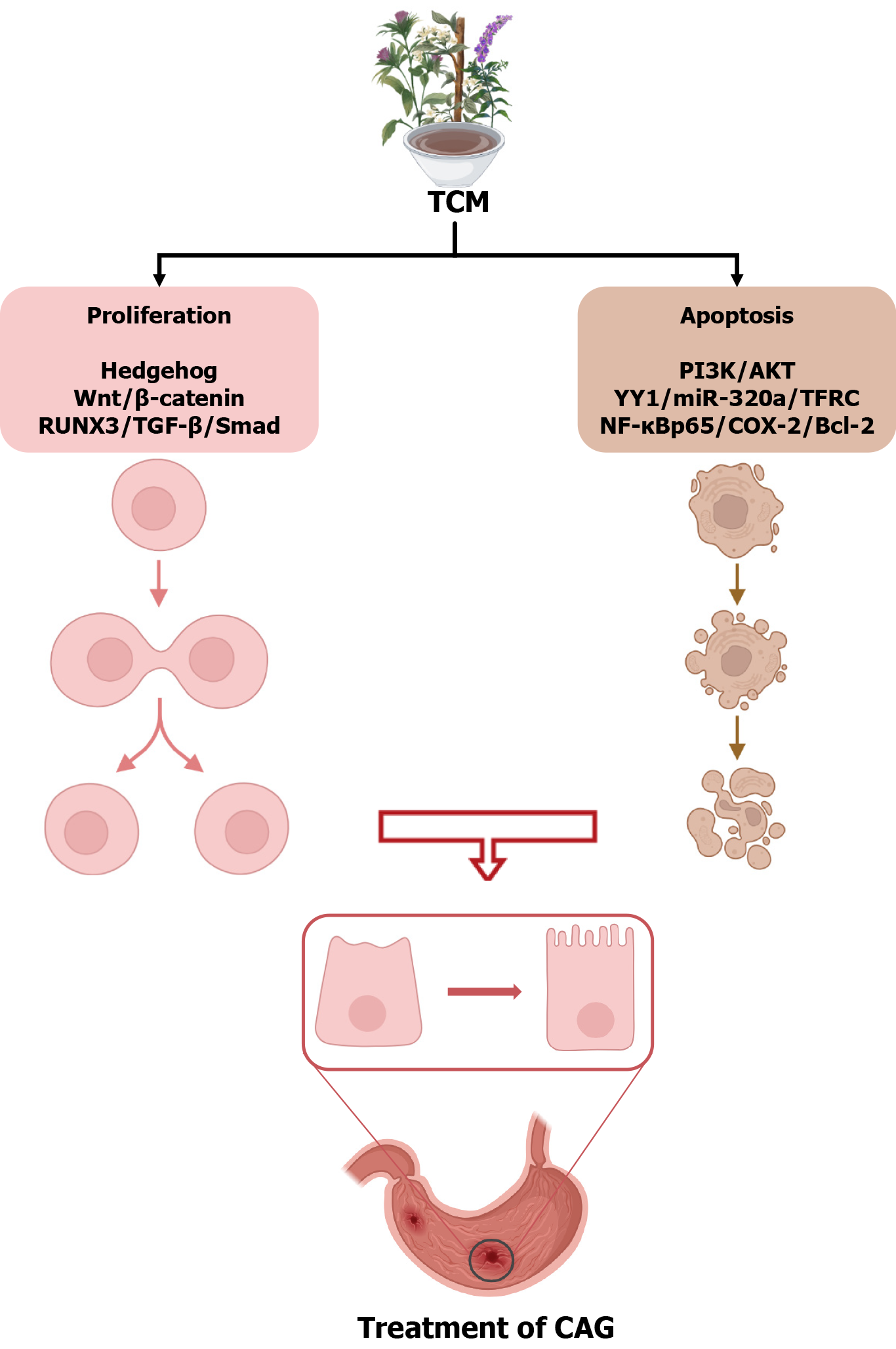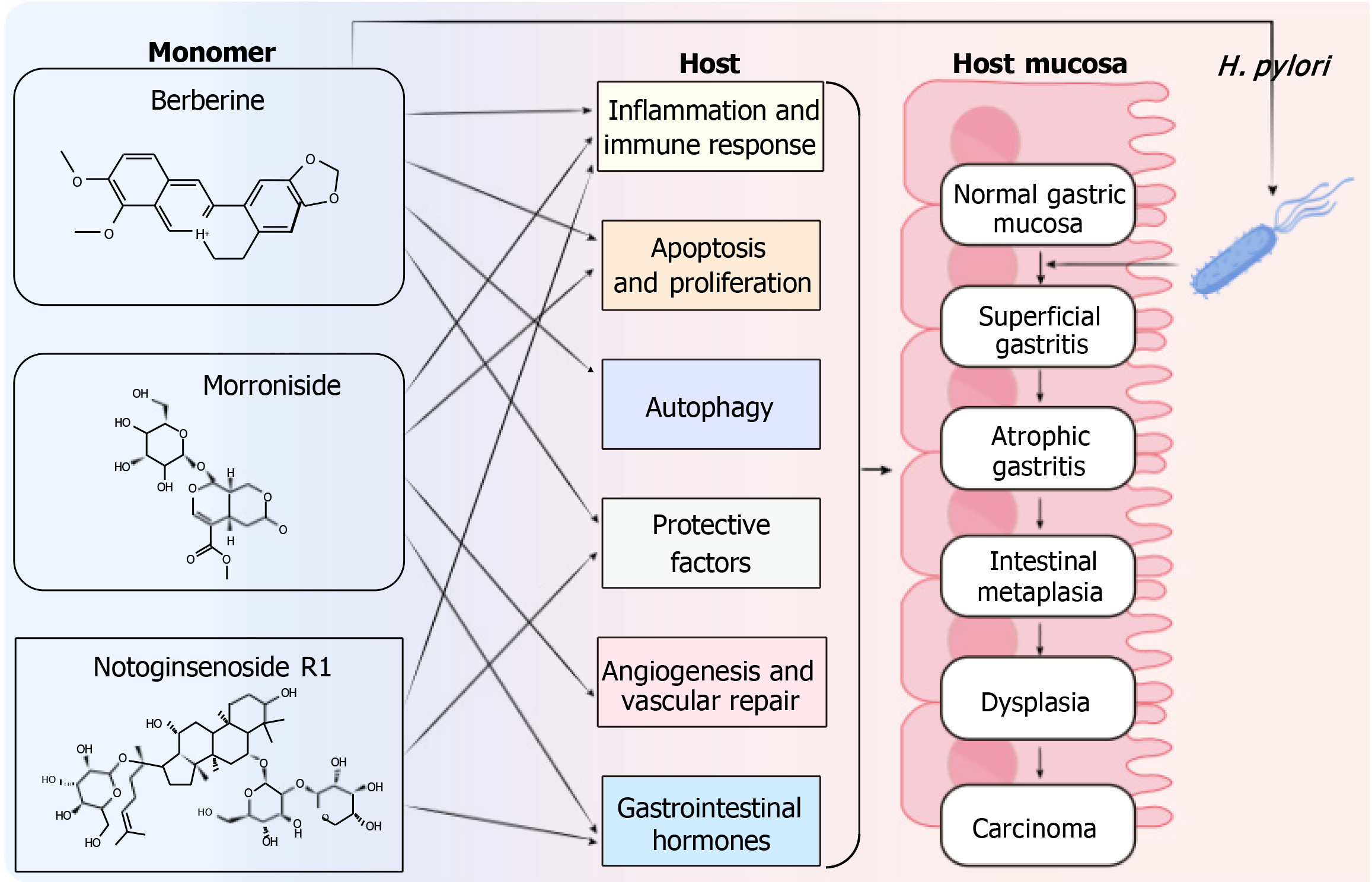Copyright
©The Author(s) 2025.
World J Gastroenterol. Mar 7, 2025; 31(9): 102053
Published online Mar 7, 2025. doi: 10.3748/wjg.v31.i9.102053
Published online Mar 7, 2025. doi: 10.3748/wjg.v31.i9.102053
Figure 1 The pattern of development from normal mucosa to gastric cancer (gastroscopy and pathological map) (H&E, × 100).
A: Normal gastric mucosa; B: Chronic non-atrophic gastritis; C: Chronic atrophic gastritis (atrophy, intestinalization); D: Dysplasia; E: Gastric cancer.
Figure 2 Traditional Chinese medicine can repair gastric mucosal barrier lesions through different levels of gastric mucosal protection, improve the defense mechanism of the mucosal barrier, and prevent the further progress of chronic atrophic gastritis and precancerous lesions of gastric cancer.
PGE2: Prostaglandin E2; EGF: Epidermal growth factor; VEGF: Vascular endothelial growth factor; TFFs: Trefoil factors; HSP70: Heat shock protein 70; H. pylori: Helicobacter pylori; SCFAs: Short-chain fatty acids; IL: Interleukin; TNF: Tumor necrosis factor; CAG: Chronic atrophic gastritis; PLGC: Precancerous lesions of gastric cancer.
Figure 3 There are five defense layers in the gastric mucosal protection system.
The first layer is a barrier composed of local mucus-bicarbonate-phospholipids. The second layer is composed of epithelial cells. The third layer is the mucosal microcirculation. The fourth layer is the mucosal immune system. The fifth layer is the repair and reconstruction factors. NK cells: Natural killer cells; DC: Dendritic cells.
Figure 4 Traditional Chinese medicine treats chronic atrophic gastritis from the proliferation and apoptosis of gastric mucosa cells perspective.
Traditional Chinese medicine promotes gastric cell proliferation via pathways such as Hedgehog, Wnt/β-catenin, and runt-related transcription factor 3/transforming growth factor-beta/Smad. Concurrently, it regulates apoptosis through the phosphoinositide 3-kinase/protein kinase B, YY1/miR-320a/transferrin receptor, and nuclear factor-kappaB p65/cyclooxygenase-2/B-cell lymphoma 2 pathways, thereby maintaining gastric mucosal health and preventing the progression of chronic atrophic gastritis. The picture highlights the role of traditional Chinese medicine in balancing cell proliferation and apoptosis to promote gastric mucosal repair. TCM: Traditional Chinese medicine; RUNX3: Runt-related transcription factor 3; TGF-β: Transforming growth factor-beta; PI3K: Phosphoinositide 3-kinase; AKT: Protein kinase b; TFRC: Transferrin receptor; NF-κB: Nuclear factor-kappaB; COX-2: Cyclooxygenase-2; Bcl-2: B-cell lymphoma 2; CAG: Chronic atrophic gastritis.
Figure 5 The structure of monomers and their effect on chronic atrophic gastritis.
The diagram outlines the protective mechanisms of three traditional Chinese medicine monomers: Berberine, morroniside, and notoginsenoside R1. These monomers influence host responses such as inflammation, apoptosis, autophagy, angiogenesis, and etc., which contribute to the prevention and treatment of gastric mucosal disorders. H. pylori: Helicobacter pylori.
- Citation: Wang L, Lian YJ, Dong JS, Liu MK, Liu HL, Cao ZM, Wang QN, Lyu WL, Bai YN. Traditional Chinese medicine for chronic atrophic gastritis: Efficacy, mechanisms and targets. World J Gastroenterol 2025; 31(9): 102053
- URL: https://www.wjgnet.com/1007-9327/full/v31/i9/102053.htm
- DOI: https://dx.doi.org/10.3748/wjg.v31.i9.102053









